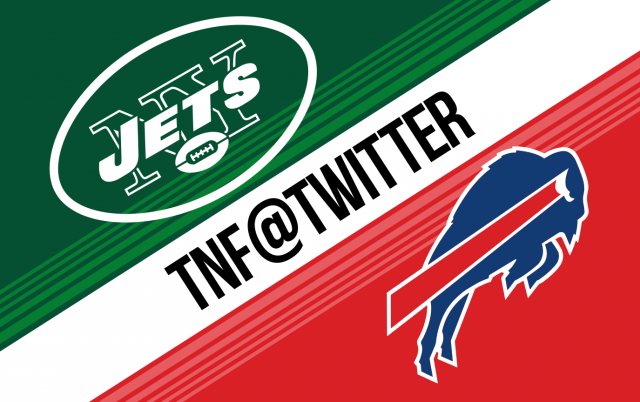The live sports streaming event that everyone was breathlessly waiting for ever since Twitter announced its live-streaming video initiative has finally happened. On Thursday night, Twitter’s live-streaming of the New York Jets v. Buffalo Bills game saw 243,000 people ‘tune in’ to Twitter for the live feed that included commercials. And, of course, live running commentary was available via Tweets.
Although that number looks good it pales in comparison to the 15.4 million people who watched the same game on NFL and CBS networks. But it does come pretty close to the 278,000 viewers who watched the Panthers-Broncos game last Thursday on NFL Mobile and the NBC Sports app combined.
According to the Wall Street Journal report, viewership was “low”:
“The low viewership turnout on Twitter compared with traditional TV suggests that it may still take some time for people to get used to watching games on the go.”
We have a different take on that. The transition from traditional sports viewers moving from big screen TVs in sports bars and in their own homes isn’t going to happen overnight. That’s clear from the gap seen with the 15.4 million vs. 243,000 viewers on traditional vs. streaming media.
But live streaming of sports events is still very much in a nascent stage. it’s only now that companies like Twitter and Amazon are getting in on the deal, but sports telecasting rights for football, basketball and baseball are tied up in long-term contracts, which means it will be another 5 years – at least – before we see mainstream games hitting the internet live.
In a sense, it’s a Catch 22 situation: viewerships aren’t going to increase without major games being streamed, and major games won’t be streamed until the NFL, etc. see some solid numbers in the online space.
But on the positive side this infant market is part of a fast-growing movement towards video streaming versus traditional cable. Made popular by Netflix and now propagated by Amazon Video, Hulu, HBO Now, YouTube Red and other players in the space, video streaming is undoubtedly the future of television. And at some point, live sports programming will be forced to make that transition.
To draw an analogy, until ten years ago cloud computing was well out of reach of individuals and small businesses, and only offered by niche players like Rackspace. But in came Amazon with its Amazon Web Services in 2006 and started offering affordable, scaleable cloud computing and infrastructure solutions. Their cloud business is now worth around $10 billion a year in revenues, and it has forced companies like IBM, Microsoft and Google to step up to the plate and popularize their own offerings.
I believe live sports streaming is going to experience the same growing pains, but early adoption by companies like Twitter and Amazon are going to change that. It may not happen in the next five years, but over the next decade we’re going to see live sports streaming viewership numbers grow – it’s inevitable.
The biggest factor that will speed up the process is high speed internet connectivity. Sports fans aren’t going to tolerate a buffer-ridden experience, but when internet speeds go up that will no longer be a problem. The average broadband connection today provides up to 25 Mbps internet download speeds. That’s going to increase in the next few years, and along with that change will come the “cutting of the cord”, signifying the shift from cable to high-speed broadband and fiber internet.
When that starts happening en masse, sports associations like the NFL will have no choice but to offer live streaming. That will put Twitter, Facebook, Amazon and other live sports streaming services at the forefront of that revolution.
So enjoy your live cable TV sports broadcasts while they last because live sports streaming is here to stay.
Thanks for reading our work! If you’re reading this on Apple News, please favorite the 1RedDrop channel (next to our logo) to add us to your news feed, or Like our page on Facebook. Please bookmark our site for more insightful articles on current and future technologies that are changing our lives.




